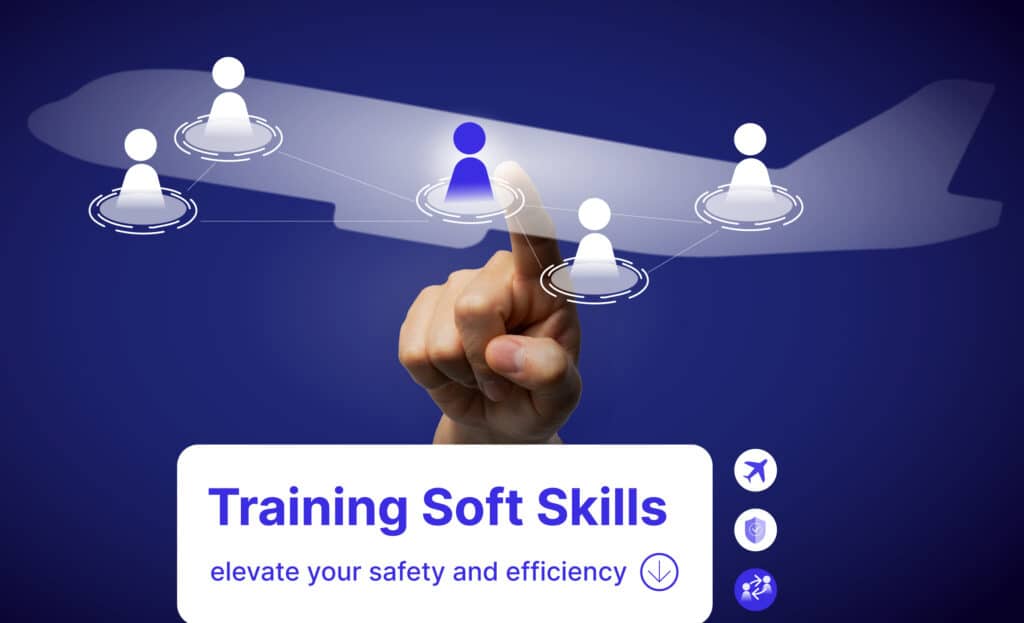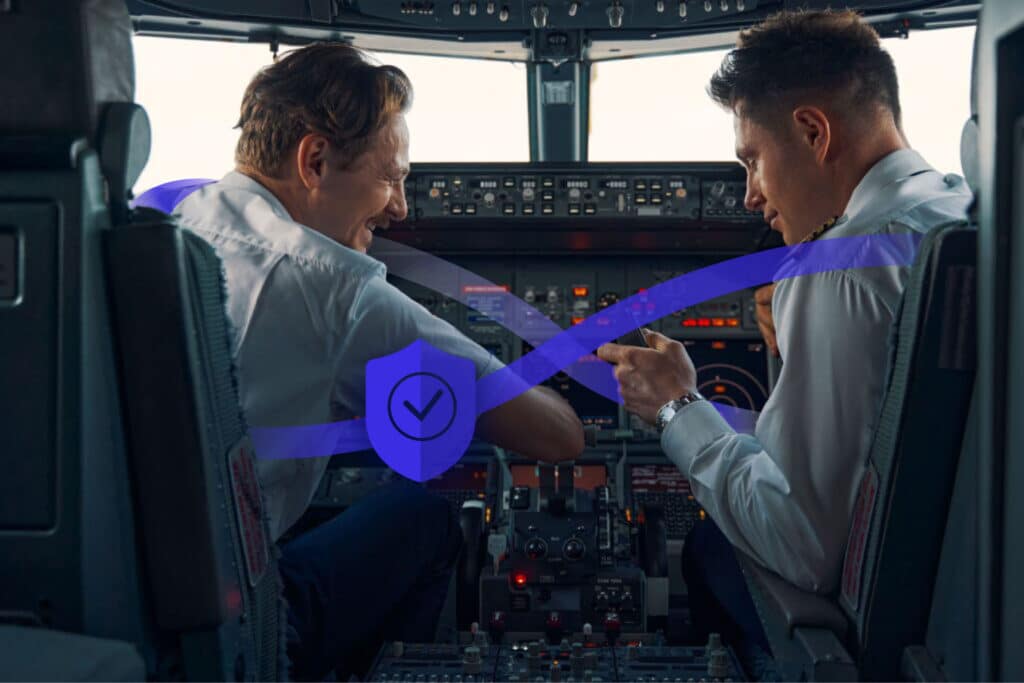
Crew Resource Management (CRM) emerged in the 1970s after the crash of United Airlines Flight 173, a DC-8 that crashed in Portland. The crew was troubleshooting a landing gear issue and crashed due to fuel starvation. The National Transportation Safety Board identified human factors as one of the primary causes.
Discover all our aviation-related topics.
In this article, we’ll explore what CRM is, its advantages and associated regulations.
Explore our upcoming CRM Trainer Core courses.
Crew Resource Management, also known as Cockpit Resource Management, is a systematic approach to training that promotes non-technical skills, such as teamwork, communication, situational awareness and decision-making among crew members.
“A management system which makes optimum use of all available resources (equipment, procedures and people) to promote safety and enhance the efficiency of flight operations”.
CAA UK
While almost every aviation-related training is concerned with the technical skills of the crew, CRM training is only concerned with the cognitive and interpersonal skills.
The cognitive skills are the skills crew members need to gain and maintain a good level of situational awareness.
Interpersonal skills are the skills crew members need to communicate effectively and behave in a way that is effective for maintaining good teamwork.
Crew Resource Management first took flight in the aviation industry, but have since spread far and wide. It is now also finding a home in diverse sectors like healthcare, energy, maritime operations, and even corporate settings.

Crew Resource Management (CRM) arose in response to findings from flight data and cockpit voice recorders. These revealed that many accidents resulted not from technical malfunctions or a lack of aircraft handling skills or technical knowledge. Instead, they appeared to be caused by the inability of crews to respond appropriately to the situation.
CRM was created to address this issue by promoting effective communication, shared situational awareness, and structured decision-making.
In a time when bell bottoms were a must-have, the disco was on the rise, and the Watergate scandal was knocking, a team of NASA investigators began evaluating the performance of airline pilots.
They discovered that more than 70% of air crashes happened not due to aircraft malfunctions or harsh weather conditions but to human error—errors such as failures in leadership, team coordination, and decision-making.
Their investigation stemmed from the Tenerife airport disaster that occurred in 1997. Two Boeing 747s collided on the runway, killing 583 people.
In response to this, a team of psychologists from NASA, here among John K. Lauber, developed a new training approach for flight crews. This training should focus on group dynamics, leadership, interpersonal communications, and decision-making – what we today call Crew Resource Management.
Today, CRM is mandated by regulatory authorities worldwide and is an integral part of the training of pilots and other aviation professionals.

Let’s look at seven of the most essential advantages of CRM training:
CRM provides a structured process for better decision-making in challenging situations. This involves gathering information, identifying the problem, generating potential solutions, evaluating solutions, and choosing the best course of action.
CRM training equips team members with tools to manage stress and maintain focus, which is vital in high-pressure environments.
CRM promotes standardised communication, reduces miscommunication, and fosters a shared understanding among team members. To achieve this, CRM fosters open communication, encourages collaboration, and involves all team members in the decision-making process.
In a high-risk environment, effective communication can be difficult due to factors like stress, noise, fatigue, and the intricacies of operating the system. CRM provides a variety of tools and techniques to help members of the crew communicate more efficiently with one another.
To operate safely, crew members must have good situational awareness, which means understanding the system’s current state and anticipating potential issues. CRM provides crews with the tools to maintain good situational awareness. Flight crews are, for example, taught to scan their surroundings, monitor indicators, and stay alert to external factors.
Crews conduct briefings to share operation goals and essential information and hold debriefings to review and learn from their performance.
CRM training aims to develop effective leadership skills within each crew member. Influential leaders can set clear goals and expectations, provide guidance and support, and foster a positive and collaborative team culture.
All flight crew members must complete CRM training at various stages of their careers. This includes initial and recurrent training and on appointment to command.
Training must be conducted by approved CRM instructors and follow approved syllabi, be detailed in the Airline’s OM-D.
Crew Resource Management is a vital approach for enhancing teamwork, communication, and decision-making in high-stakes environments.
NaviMinds offers a wide range of CRM initial, recurrent, and command upgrade courses. Please get in touch to find out more about how we can help your organisation implement Crew Resource Management training. +45 26 37 39 39 or at ask@naviminds.com
Dive into our insightful and informative articles that will help you explore more and get ahead of the competition.
© 2024 NaviMinds – Designed by Aveo web&marketing